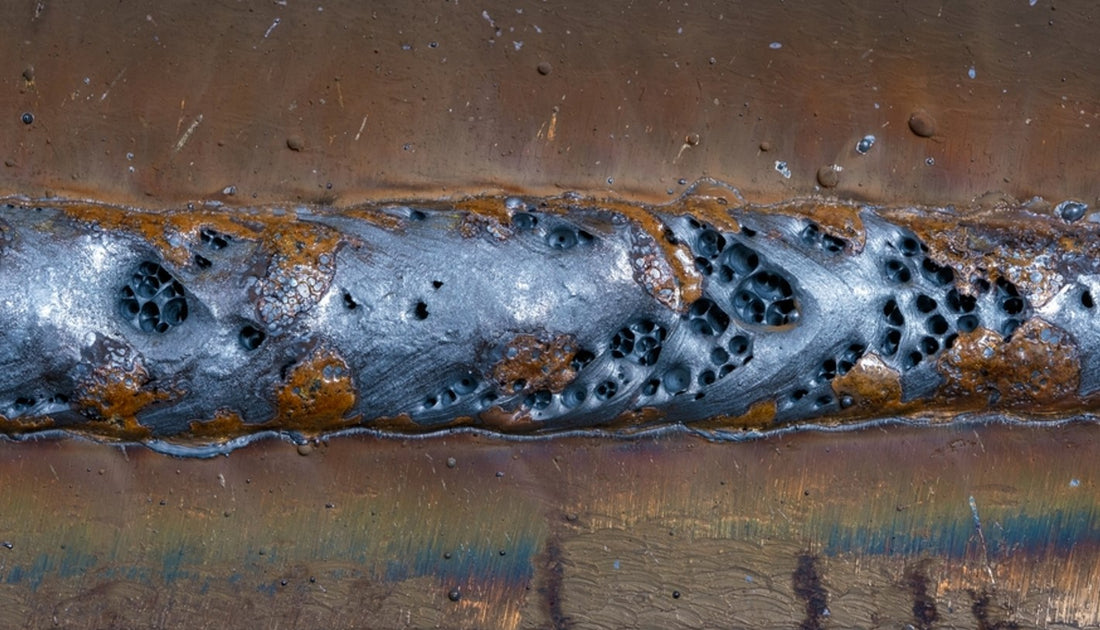Discover What is Porosity in Welding and Its Effect on Architectural Stability
Discover What is Porosity in Welding and Its Effect on Architectural Stability
Blog Article
Porosity in Welding: Identifying Common Issues and Implementing Finest Practices for Prevention
Porosity in welding is a prevalent issue that frequently goes undetected till it causes substantial problems with the stability of welds. This common issue can endanger the stamina and durability of welded structures, positioning security dangers and leading to expensive rework. By understanding the source of porosity and carrying out efficient avoidance techniques, welders can dramatically improve the top quality and integrity of their welds. In this discussion, we will certainly discover the vital aspects adding to porosity formation, examine its destructive results on weld performance, and talk about the most effective techniques that can be embraced to minimize porosity occurrence in welding processes.
Common Root Causes Of Porosity

Making use of dirty or damp filler materials can introduce pollutants right into the weld, adding to porosity concerns. To mitigate these usual reasons of porosity, detailed cleaning of base steels, proper securing gas option, and adherence to optimum welding criteria are vital techniques in accomplishing high-grade, porosity-free welds.
Impact of Porosity on Weld High Quality

The presence of porosity in welding can dramatically endanger the structural integrity and mechanical residential or commercial properties of welded joints. Porosity creates voids within the weld metal, weakening its overall strength and load-bearing ability. These spaces act as stress and anxiety concentration points, making the weld extra prone to fracturing and failing under used loads. Additionally, porosity can reduce the weld's resistance to corrosion and other ecological aspects, even more reducing its long life and efficiency.
Among the key consequences of porosity is a decline in the weld's ductility and toughness. Welds with high porosity levels often tend to show reduced effect strength and reduced ability to warp plastically before fracturing. This can be particularly worrying in applications where the bonded components are subjected to dynamic or cyclic loading conditions. Furthermore, porosity can hamper the weld's capability to effectively transfer forces, resulting in early weld failure and potential security threats in vital structures.
Ideal Practices for Porosity Avoidance
To enhance the architectural integrity and top quality of bonded joints, what certain actions can be implemented to minimize the occurrence of porosity throughout the welding procedure? Using the right welding strategy for the details material being welded, such as changing the welding angle and gun position, can further prevent porosity. Routine assessment of welds and prompt remediation of any kind of issues identified during the welding process are vital techniques to prevent porosity and create high-quality welds.
Significance of Appropriate Welding Techniques
Carrying out proper welding techniques is extremely important in ensuring the architectural honesty and top quality of welded joints, building upon the structure of reliable porosity avoidance measures. Too much warm can lead visit site to enhanced porosity due to the entrapment of gases in the weld swimming pool. In addition, using the ideal welding specifications, such as voltage, current, and travel speed, is crucial for attaining audio welds with very little porosity.
In addition, the selection of welding procedure, whether it be MIG, TIG, or stick welding, need to align with the details requirements of the project to ensure ideal outcomes. Correct cleaning and why not try this out prep work of the base steel, as well as picking the appropriate filler material, are also essential elements of skillful welding techniques. By sticking to these ideal techniques, welders can decrease the risk of porosity formation and create high-quality, structurally sound welds.

Evaluating and Quality Control Procedures
Quality assurance procedures play a vital duty in verifying the integrity and reliability of bonded joints. Testing procedures are important to identify and protect against porosity in welding, making certain the stamina and durability of the end product. Non-destructive screening techniques such as ultrasonic testing, radiographic testing, and visual examination are frequently employed to identify potential defects like porosity. These methods enable the assessment of weld top quality without compromising the stability of the joint. What is Porosity.
Post-weld evaluations, on the various other hand, analyze the final weld for any kind of defects, including that site porosity, and confirm that it meets specified standards. Carrying out an extensive high quality control plan that includes comprehensive testing treatments and assessments is vital to reducing porosity problems and guaranteeing the total quality of welded joints.
Verdict
To conclude, porosity in welding can be a typical issue that influences the top quality of welds. By identifying the common root causes of porosity and applying best practices for prevention, such as correct welding strategies and testing procedures, welders can ensure premium quality and trustworthy welds. It is vital to prioritize prevention methods to decrease the event of porosity and maintain the honesty of bonded structures.
Report this page